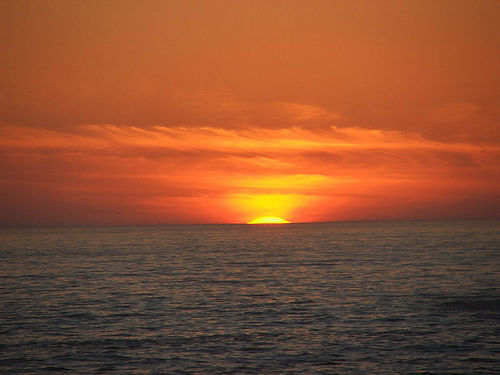 Renewable energy advocates are lobbying furiously to get the lame-duck Congress to act before the sun sets on the program.Photo: Kelly CooksonUsually, a news release from a solar developer announcing it has bought equipment elicits a yawn and quick jab at the delete key.
Renewable energy advocates are lobbying furiously to get the lame-duck Congress to act before the sun sets on the program.Photo: Kelly CooksonUsually, a news release from a solar developer announcing it has bought equipment elicits a yawn and quick jab at the delete key.
But the announcement from SolarReserve, a Santa Monica builder of solar thermal power plants, caught my attention because it’s part of the company’s race against the clock to qualify for lucrative federal incentives for renewable energy that expire at the stroke of midnight on New Year’s Eve.
Enacted as part of the Obama stimulus package, the program gives green energy developers cash grants to cover 30 percent of the cost of their multibillion-dollar projects in lieu of a standard 30 percent tax credit (which is of little utility to startups without profits to offset).
The catch is that developers must start digging dirt on their projects by year’s end to qualify for the cash grants. Hence, the mad dash by California regulators to approve big solar power projects over the past three months so builders can meet that deadline.
SolarReserve is still awaiting approval of its 150-megawatt Rice Solar Energy Project from the California Energy Commission. But the company’s chief executive, Kevin Smith, earlier told me that the SolarReserve could prove its eligibility for the cash grants by making a major procurement of equipment by the end of the year instead of actually moving bulldozers onto the project site in the Southern California desert.
The company also has a 110-megawatt solar project under review in Nevada.
For the Rice power plant, as many as 17,500 large mirrors — each one 24 feet by 28 feet — will be attached to 12-foot pedestals. The mirrors, called heliostats, will be arrayed in a circle around a 538-foot concrete tower.
Atop the tower will sit a 100-foot receiver filled with 4.4 million gallons of molten salt. The heliostats will focus the sun on the receiver, heating the salt to 1,050 degrees Fahrenheit. The liquefied salt flows through a steam-generating system to drive the turbine and is returned to the receiver to be heated again.
The salt will be able to store up to seven hours’ worth of solar heat, releasing it when the sun is not shining to power the turbine. SolarReserve licenses the molten salt system from United Technologies Corp., the old-line defense and aerospace giant that developed the technology in the 1980s and 1990s.
SolarReserve’s move to spend big bucks to purchase equipment for the two projects also is a sign that the company is confident of securing crucial federal loan guarantees to finance the power plants.
“Our decision to proceed with the procurement of long-lead materials and our progress in advancing DOE-supported financing are key milestones in our construction of power plants based upon this game-changing, U.S.-developed and tested solar technology,” Smith said in a statement.
How long that game will be played will depend in part on if Congress extends the cash grants for another two years. Renewable energy advocates are lobbying furiously to get the lame-duck Congress to act before the sun sets on the program.
“It’s simply the most important policy for continuing growth of renewable energy in the United States,” Rhone Resch, president of the Solar Energy Industries Association, said Wednesday during a press conference.


